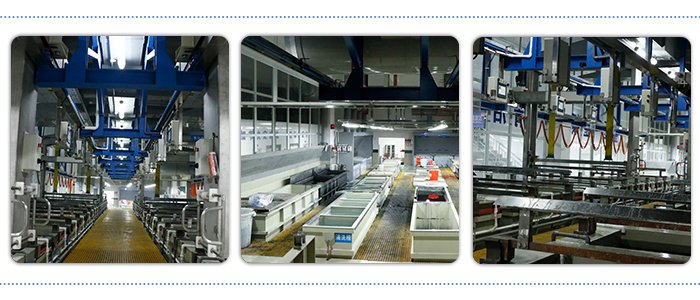If you’ve worked with aluminum CNC machining, you’ve likely encountered an issue that leaves both manufacturers and clients scratching their heads: spots or blemishes on the finished parts. These spots, whether visible after anodizing or during regular inspections, can compromise both aesthetics and functionality.
Over the years, I’ve dealt with numerous cases of spotting in aluminum CNC machining. Each instance taught me valuable lessons about its causes and, more importantly, how to prevent it. In this guide, I’ll dive deep into the reasons for these imperfections and share practical solutions to keep your parts spotless.
1. What Are Spots on Aluminum Parts?
Spots on aluminum CNC-machined parts refer to visible blemishes or discolorations on the surface. These can range from faint, cloudy areas to stark, dark spots that are impossible to ignore.
Types of Spots:
- Oxidation Spots: Caused by uneven oxidation layers during processing or anodizing.
- Contamination Marks: Result from oils, grease, or chemicals left on the surface.
- Machining Defects: Appear due to tool marks or improper cutting techniques.
- Post-Processing Flaws: Emerge during anodizing, finishing, or cleaning stages.
Key Takeaway:
Identifying the type of spot is the first step to resolving the issue and preventing it in future projects.
2. Common Causes of Spots in Aluminum CNC Machining
Understanding the root causes of spotting is critical. Here are the most common culprits:
Material Impurities
Aluminum alloys with inconsistent compositions often result in uneven finishes. For example, alloys with high silicon content may develop dark spots during anodizing.
Improper Cleaning
Residual oils, dirt, or chemicals from the machining process can interfere with subsequent finishing steps, leaving spots behind.
Surface Contamination During Machining
Cutting fluids, lubricants, or handling without gloves can introduce contaminants that result in blemishes.
Poor Anodizing Practices
Inconsistent current densities, unbalanced electrolyte compositions, or temperature fluctuations during anodizing can cause discoloration or spots.
Environmental Factors
Humidity, air quality, and exposure to contaminants during storage or processing can contribute to spotting.
3. Preventing Spots: The Material Stage
The foundation of flawless CNC-machined parts starts with material selection and handling.
Best Practices:
- Choose High-Quality Aluminum Alloys: Opt for alloys like 6061 or 5052 that are less prone to impurities.
- Request Certifications: Ensure your supplier provides material certifications to verify purity and composition.
- Inspect Raw Materials: Check for visible defects or inconsistencies before machining.
Real-Life Example:
A batch of parts machined from a lower-grade aluminum alloy resulted in widespread spotting after anodizing. Switching to a certified 6061 alloy resolved the issue.
4. Spot-Free Machining Techniques
How you machine the part plays a massive role in preventing spots.
Tips for Cleaner Machining:
- Keep Tools Sharp and Clean: Dull tools generate heat, which can leave burn marks or discoloration.
- Use Compatible Cutting Fluids: Avoid fluids that are difficult to clean or leave residues.
- Maintain Proper Speeds and Feeds: Overheating during cutting can oxidize the aluminum, causing spots.
Common Mistakes:
- Skipping regular tool maintenance.
- Using inappropriate coolants that react with aluminum.
5. Effective Cleaning and Preparation
Cleaning is often the most overlooked step, yet it’s critical to achieving a spotless finish.
Cleaning Steps:
- Degrease Immediately After Machining: Use an industrial degreaser to remove cutting fluids and oils.
- Rinse Thoroughly: Any residue left during cleaning can lead to spots.
- Handle With Care: Use gloves to avoid transferring skin oils onto the aluminum.
Pro Tip:
Always clean aluminum parts in a controlled environment to minimize exposure to airborne contaminants.
6. Best Practices for Anodizing Aluminum
Anodizing can either enhance or ruin the surface finish, depending on the execution.
Key Factors to Monitor:
- Electrolyte Purity: Contaminated anodizing baths are a leading cause of spotting.
- Temperature Stability: Fluctuations can lead to uneven oxidation layers.
- Uniform Current Distribution: Ensure all parts receive consistent current during anodizing.
Troubleshooting Spots During Anodizing:
- Inspect the anodizing tank for impurities.
- Test for voltage or current inconsistencies.
7. Post-Processing and Storage Tips
Even after machining and anodizing, improper handling or storage can lead to spots.
Preventative Measures:
- Dry Parts Quickly: Water spots can form if parts aren’t dried immediately after rinsing.
- Use Protective Coatings: Apply anti-corrosion coatings to prevent oxidation during storage.
- Store in a Controlled Environment: Minimize exposure to humidity and contaminants.
8. Partnering With a Reliable CNC Machining Supplier
Sometimes, spotting issues arise because of inconsistent practices at the supplier level. Partnering with a trustworthy CNC machining provider can eliminate many of these problems.
Why yl-machining Excels:
At yl-machining, we follow strict quality control measures to ensure every aluminum part is flawless. Our expertise in material selection, machining precision, and surface treatments has helped clients avoid issues like spotting entirely.
9. Continuous Improvement and Monitoring
No process is perfect, and even with the best practices in place, issues can arise. Regular monitoring and process improvements are key to long-term success.
Steps to Maintain High Standards:
- Conduct Regular Inspections: Check for spots at each stage of production.
- Invest in Employee Training: Ensure all staff understand the importance of cleanliness and precision.
- Gather Client Feedback: Use customer insights to refine your processes further.
Spots on aluminum CNC-machined parts can be a frustrating and costly issue, but with the right practices in place, they are entirely preventable. By focusing on material selection, machining precision, thorough cleaning, and tight process controls during anodizing, you can achieve a flawless finish every time.
Have you faced challenges with spots on aluminum parts? Let me know in the comments, and I’d be happy to share more tips tailored to your situation!







